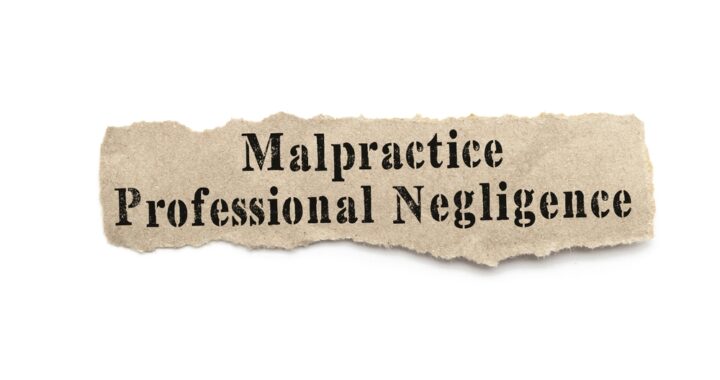In an interesting dichotomy, which statute of limitations applies to professional malpractice claims relating to construction claims, i.e., in the construction context?
Is it the two year statute of limitations in Florida Statute s. 95.11(4)( a) that governs professional malpractice claims or is it the four year statute of limitations in Florida Statute s. 95.11(3)(c) that governs actions “founded on the design, planning, or construction of an improvement toot real property”? This dichotomy led the appeal in American Automobile Ins. v. FDH Infrastructure Services, LLC, 48 Fla.L.Weekly D1091a (Fla. 3d DCA 2023).
This case sadly involved a construction accident that led to deaths. A contractor was engaged to install an antenna on an existing television tower. The contractor hired an engineering firm “to perform a structural analysis as to the stability and weight-bearing capacity of the tower. [The engineer] was contractually obligated to assess the proposed rigging plan…to lift the loads necessary to construct the antenna.” FDH Infrastructure Services, supra. Unfortunately, after the installation of the antenna commenced, the rigging components failed resulting in workers falling to their deaths. After insurers paid out benefits, they sued the engineering firm under equitable and contractual subrogation theories. The engineering firm moved for summary judgment arguing the subrogation claims were barred by the professional malpractice two year statute of limitations in section 95.11(4)(a). The trial court agreed and granted summary judgment in favor of the engineering firm.
On appeal, the insurers argued the trial court applied the wrong statute of limitations. The trial court should have applied the four year statute of limitations in section 95.11(3)(c) governing the construction context. The appellate court agreed:
Section 95.11(3) applies narrowly to only construction-based claims. This provision stands in contrast to section 95.11(4), which encompasses any “professional malpractice” action. Consistent with this distinction, in Kelley v. School Board of Seminole County, 435 So. 2d 804 (Fla. 1983), the Florida Supreme Court approved the application of section 95.11(3) in a case of professional negligence associated with the provision of architectural services. Id. at 805, n.2 (“Both the trial court and the [F]ifth [D]istrict found the 4-year statute applicable, and we agree with the district court that the language of (3)(c), rather than (4)(a), is more specifically applicable to this case.”). The same view has been adopted by several other courts. See Havatampa Corp. v. McElvy, Jennewein, Stefany & Howard, Architects/Planners, Inc., 417 So. 2d 703, 704 (Fla. 2d DCA 1982) (applying section 95.11(3)(c) to an action by building owner against architect, contractor, subcontractor, materialmen, and bonding company utilized in design and construction of new manufacturing facility); Hotels of Deerfield, LLC v. Studio 78, LLC, No. 21-60980-CIV, 2022 WL 1666976, at *4 (S.D. Fla. Mar. 7, 2022) (“[B]ecause [section] 95.11(3)(c) is more specific than 95.11(4)(a) regarding claims against design professionals arising out of designs or improvements to real property, the former should control because more specific statutes preempt more general statutes as a matter of law.”); see also Luis Prat & Cary Wright, Rights and Liabilities of Architects and Engineers, in Florida Construction Law and Practice ch. 3.5 (10th ed. 2022) (quoting § 95.11(3)(c), Fla. Stat.) (“Actions for professional malpractice by privity claimants against the design professional, other than those actions arising out of the ‘design, planning, or construction of an improvement to real property,’ must be commenced within two years . . . .”); cf. Lillibridge Health Care Servs., Inc. v. Hunton Brady Architects, P.A., No. 6:08-CV-1028, 2010 WL 3788859, at *18 (M.D. Fla. Sept. 24, 2010) (footnote omitted) (rejecting defendant’s contention that section 95.11(4)(a) was more specific statute in action by owner of medical office building against architect and engineering firm for problems arising during construction of building and observing “Florida courts — to which this [c]ourt must defer on issues of state law — have repeatedly applied paragraph (3)(c) rather than (4)(a) in suits against architects and engineers”).
***
[I]n the instant case, FDH was contractually obligated to assess the structural integrity of the tower and rigging plan prior to the commencement of construction. Performing the calculations necessary to enable the construction of the new antenna on the existing building was part and parcel of that task. Given the parameters of the contract, the summary judgment record established the subrogation “action[s] [were] founded on the . . . planning . . . of an improvement to real property.” § 95.11(3)(c), Fla. Stat. Consequently, we find this action falls within the ambit of the four-year limitation.
FDH Infrastructure Services, supra.
The appellate court did note a contrast with a case where the two-year professional malpractice statute of limitations applied. In that case, an engineering firm was hired to review construction drawings and inspect a newly constructed home. Since the inspection involved already completed construction, “‘this [did] not transform the claim into one founded on the ‘construction’ of an improvement to real property, as that term is commonly understood.'” FDH Infrastructure Services, supra, quoting Manney v. MBV Engineering, Inc., 273 So.3d 214, 216, 217 (Fla. 5th DCA 2019).
When assessing professional malpractice claims against a design professional, etc., in the construction context, please do so with the advice and strategic input from construction counsel.
Please contact David Adelstein at dadelstein@gmail.com or (954) 361-4720 if you have questions or would like more information regarding this article. You can follow David Adelstein on Twitter @DavidAdelstein1.

